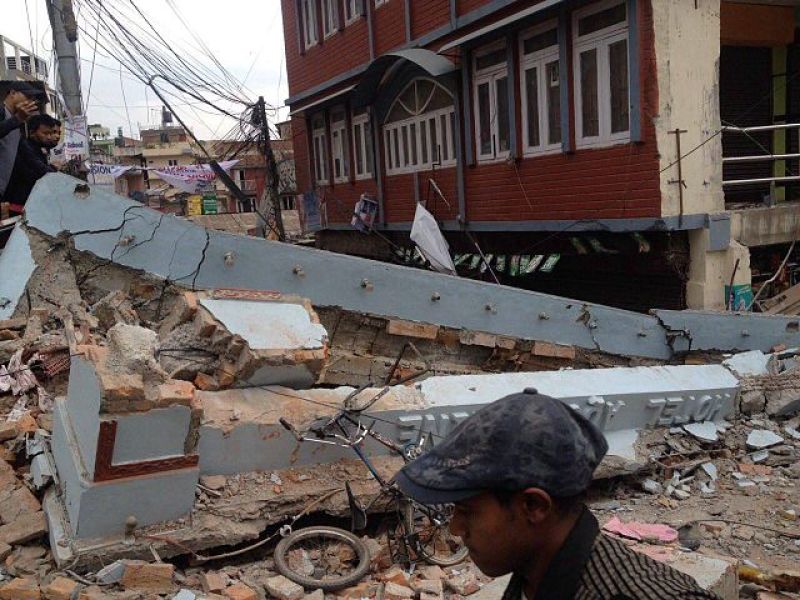
One year ago Nepal was struck by a devastating earthquake which killed over 8,000 lives and wounded 21,000 others. The international community had pledged billions of dollars in relief and reconstruction work, but still, some the worst-hit areas lie torn down, according to reports.
Some people are working from damaged buildings that can collapse any time, like Punya Gajurel, who manages a school.
"We have to have somewhere to keep working," Punya Gajurel told Deutsche Welle from third floor of a building which has completely damaged lower floors sagging from the weight of upper rooms. "This is the only room we have left."
The Nepalese government has not yet rebuilt the area, and the efforts seem so slow that British officials, one of the international donors, are disbursing money directly to construction as the local authorities seem to be lagging behind in implementing the disaster-relief plan.
"We really need to see actual reconstruction start to happen, and start to happen fast. I think many donor agencies are getting very frustrated with the pace of progress," said Kenichi Yokoyama, Nepal head of Asia Development Bank which has contributed towards the relief fund.
Thousands of people continue to live in temporary shelters which have no electricity, where it gets too hot in summer and too cold in winters. With the approaching monsoon season, they are left vulnerable to heavy rains and floods in their makeshift accommodations.
The United Nations Nepal country team expressed their solidarity with the Nepalese people, and also raised concerns about the upcoming monsoon season.
Nepal's tourism industry is one of the main sources of the country's income, and has suffered the most after the earthquake.
After one year, travelers have returned, but in far less numbers compared to before.
"There are no sales at all. We don't have time to stay this idle at this very peak season," said Bishnu Sapkota, a mountaineering shopkeeper.
World Expeditions, a company that has organized trekking in Nepal for the last 40 years, is running a "Re-Build Nepal" project and has sent over 1,000 travelers to the country since the quake struck.
"Nepal is 'open for business' but trekking is down, which has had a knock-on effect - from porters in small villages to taxi drivers in Kathmandu and restaurants seeing less business. Now, more than ever, the people of Nepal need something back from us. The Foreign and Commonwealth Office advises that it is safe to travel throughout the country and we encourage travelers to consider visiting sooner rather than later," Gordon Steer, company manager in UK, was quoted as saying by The Guardian.
A group of students from Cambridge University have been working with the Helambu Education and Livelihood Project for the last one year to raise money and awareness for the rebuilding efforts in Nepal.
Imogen Buxton, former president of the society said: "It was overwhelming to receive such an incredible response to our earthquake appeal last year. We knew just how urgently emergency relief was needed by our friends in the rural Helambu region. It's fantastic to raise money for a charity like Helambu Education and Livelihood Partnership, because we know that they will work ceaselessly with the affected communities to support a sustainable rebuilding process, and to continue to improve educational provision in the long term."



















